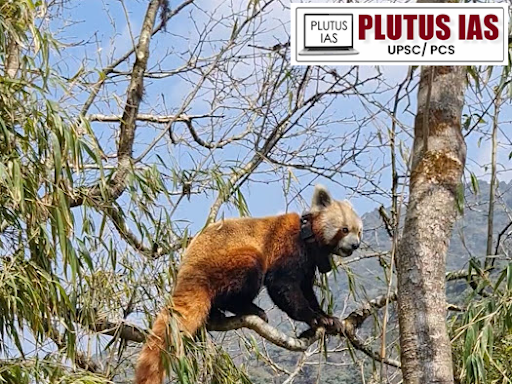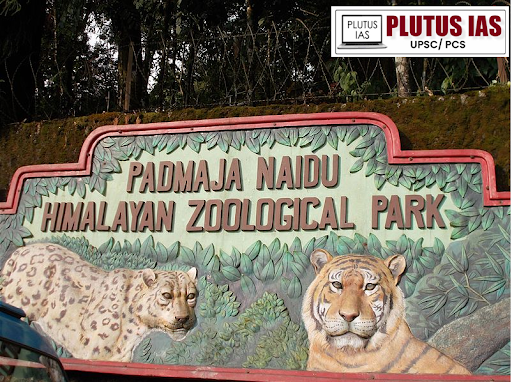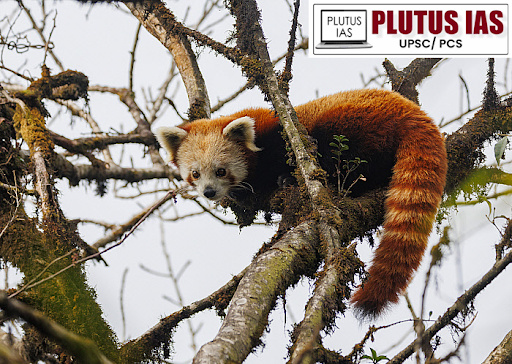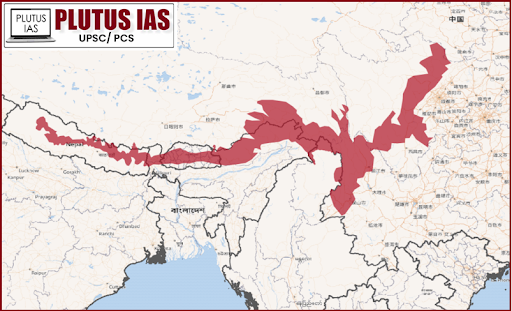08 Oct PRELIMS BITs: Red Panda.
This article covers the “ prelims related topic of the Red Panda in The Padmaja Naidu Himalayan Zoological Park”
SYLLABUS MAPPING:
General studies: General issues on Environmental ecology, Bio-diversity.
FOR PRELIMS:
What is WAZA, key facts related to the Red Panda, Padmaja Naidu Himalayan Zoological Park?
WHY IN THE NEWS?
The Padmaja Naidu Himalayan Zoological Park’s Red Panda Program has been recognized as a finalist for the World Association of Zoos and Aquariums (WAZA) Conservation Award 2024. This program highlights the zoo’s commitment to conservation, evidenced by habitat restoration efforts and successful initiatives to release nine captive-bred red pandas into Singalila National Park between 2022 and 2024.

Padmaja Naidu Himalayan Zoological Park:

Establishment: Originally known as Himalayan Zoological Park on August 14, 1958.
Location: Darjeeling, West Bengal, India.
Founders: A joint venture between the Government of India (Department of Science and Technology) and the Government of West Bengal (Department of Education).
Society Registration: Converted into a registered society in January 1972 under the West Bengal Societies Registration Act, 1961.
Funding Arrangement: Maintenance costs are shared by the Central and State Governments.
Department Transfer: In May 1993, management transferred to the Department of Forests, Government of West Bengal.
Central Oversight: Operates under the Ministry of Environment and Forests at the Government of India level.
Renaming: Renamed in 1975 in memory of Late Smt. Padmaja Naidu, ex-Governor of West Bengal, by then Prime Minister Indira Gandhi.
The WAZA:
The World Association of Zoos and Aquariums (WAZA), founded in 1935 in Basel, Switzerland, serves as the global umbrella organization for zoos and aquariums. With its headquarters in Barcelona, Spain,
OBJECTIVES: WAZA focuses on guiding and supporting its members in animal care and welfare, environmental education, and global conservation efforts. Formerly known as the World Zoo Organization, WAZA collaborates with like-minded organizations worldwide and is a member of the International Union for Conservation of Nature (IUCN).
RED PANDA:

Red Panda (Ailurus fulgens)
The red panda, also known as the lesser panda, is a small mammal native to the eastern Himalayas and southwestern China. Characterized by its dense reddish-brown fur, black belly and legs, white-lined ears, and ringed tail. Well adapted for climbing, the red panda has flexible joints and curved semi-retractile claws.
Conservation Status:
The red panda is classified as Endangered on the IUCN Red List and is listed in CITES Appendix I. The red panda is listed in Schedule I of the Wildlife (Protection) Act, of 1972, which means it has the highest legal protection. This act prohibits hunting, poaching, killing, and trading of the red panda
Behavior and Ecology:
Primarily solitary and arboreal, red pandas inhabit coniferous and temperate forests, favoring steep slopes with dense bamboo cover. They are largely nocturnal and crepuscular, often resting in trees.
Herbivorous:
The red panda is largely herbivorous and feeds primarily on bamboo, Their diet mainly consists of bamboo shoots and leaves, but they also consume fruits and blossoms.
Distribution and Habitat:
Red pandas are found in Nepal, India (Sikkim, West Bengal, Arunachal Pradesh), Bhutan, southern Tibet, northern Myanmar, and China’s Sichuan and Yunnan provinces. Their habitat is estimated to cover about 47,100 km² (18,200 sq mi) at elevations between 2,000 and 4,300 m (6,600–14,100 ft) in temperate climates.

Reproduction and Parenting:
Red pandas are long-day breeders, mating as daylight increases after the winter solstice. Mothers typically care for their young in sheltered locations, providing them with a safe environment to grow. Breeding occurs in early spring, with females giving birth to litters of up to four cubs in the summer
Protected Areas for Red Pandas in India
- Khangchendzonga National Park
- Singalila National Park
- Varsey Rhododendron Sanctuary
- Shingba Rhododendron Sanctuary
- Fambong Lho Wildlife Sanctuary
- Kyongnosla Alpine Sanctuary
- Pangolakha Wildlife Sanctuary
- Maenam Wildlife Sanctuary
- Namdapha National Park
Download plutus ias current affairs eng med 8th Oct 2024
PRELIMS QUESTION
Q. With reference to the Red Panda, Consider the following statement:
1. The Red panda, also known as the lesser panda, is a small mammal native to the Western Himalayas.
2. The Red panda is largely herbivorous and feeds primarily on bamboo.
3. They are nocturnal and crepuscular mammals.
How many of the above-given statements are correct?
A. Only one
B. Only two
C. All three
D. None
ANSWER: B



No Comments